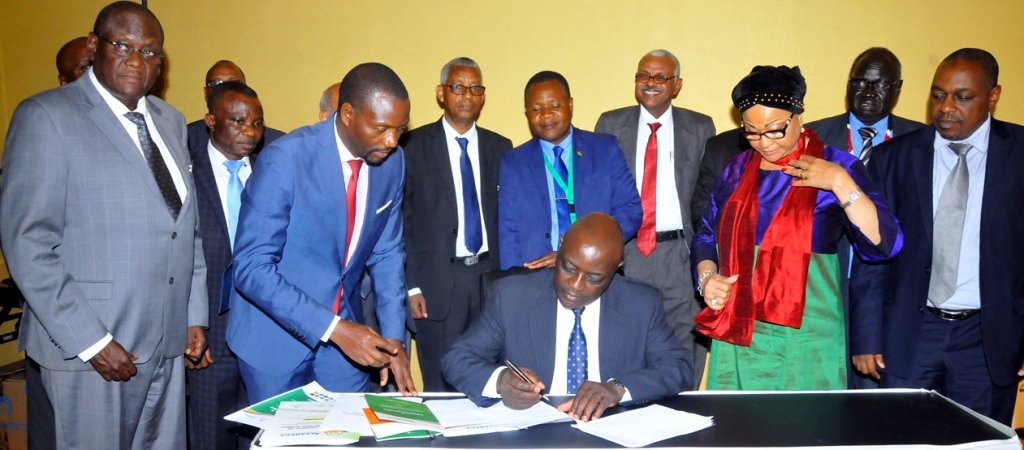Membership
The Association for Strengthening Agricultural Research in Eastern and Central Africa (ASARECA) is a not for profit inter-governmental subregional organization. ASARECA comprises 14 member countries: Cameroon, Central African Republic, Burundi, the Democratic Republic of Congo, Eritrea, Ethiopia, Kenya, Madagascar, Republic of the Congo, Rwanda, South Sudan, Sudan, Tanzania and Uganda.
Origin
ASARECA was established in 1994 by ten member States represented by their National Agricultural Research Institutes (NARIs) following the approval of the Framework For Action (FFA) for agricultural research in Eastern and Central Africa by the Special Programme for Africa Agricultural Research (SPAAR). The original ten member States included Burundi, Democratic Republic of Congo, Eritrea, Ethiopia, Kenya, Madagascar, Rwanda, Sudan, Tanzania and Uganda. The membership has since grown to 12 following the admission of South Sudan (2011), Republic of the Congo (2019), and the enjoinment of Cameroon and Central African Republic (2020).
Diplomatic Mission
To date, ASARECA has been designated as an Intergovernmental AR4D umbrella Body of 14 Member Countries in Eastern and Central Africa. Upon this designation, the Government of Uganda bestowed upon ASARECA a diplomatic status in 2019.
Evolution of ASARECA
ASARECA has evolved through three major phases:
The period of birth and development of the ASARECA Long Term Strategic Plan (1997).
This period characterized the creation of Research Networks which drove ASARECA AR4D
agenda at the time.
The period of change and development of the Second ASARECA Strategic Plan (2007-2016).
This period, saw ASARECA negate the Research Networks approach and adopt the Programmatic approach. This was implemented through ASARECA Operational Plan One (2008-2013) and Operational Plan Two – (2014-2018).
ASARECA Going forward
The Third phase is the current period, which ASARECA has embarked on after revisiting and refreshing its approach to AR4D through the development of the new ASARECA Strategy and
Results Framework 2019-2028; the Medium Term Operational Plan 1 (2019-2023); and revisiting its niche to focus on where stakeholders demand it to concentrate.
Why ASARECA was Established by the NARS
The founders established ASARECA to complement national efforts through sub-regional level collective action and cost-effective utilization of resources to improve the delivery and impact of scientific knowledge, policy options and technologies to drive the sub-region towards meeting the Comprehensive African Agricultural Development Program (CAADP).
Core functions of ASARECA
- Promote and facilitate regional collaboration for cost-effective utilization of available resources to
- produce technologies, knowledge and innovations (regional public goods) to be shared by member
- countries.
- Mobilize resources globally for implementing collective action on agricultural research, training,
- extension and education services.
- Develop policies and programs aimed at deepening co-operation in agricultural research among
- member countries and facilitate the adoption of such policies including agricultural commodity
- arrangements.
- Complement the activities of the national, panAfrican and international research institutions
- guided by the Principle of subsidiary, by focusing on activities for which the sub-region has a comparative advantage over national or international actions in
- delivering more responsive services to stakeholders.
- Empower end-users to meaningfully participate in developing priorities for AR4D.
- Contribute to the development and transfer of appropriate knowledge, methodologies,
- information and technologies and benefits among the NARS.
- Strengthen the capacity of national AR4D institutions to fulfill their national mandates.
- Promote the conservation of natural resources and the adoption of improved methods of agricultural production.

